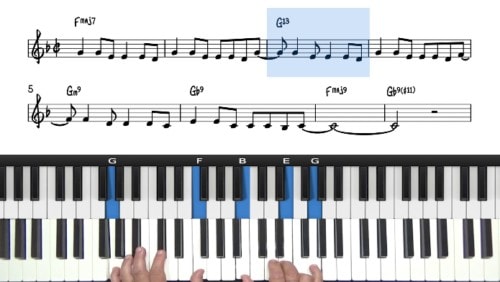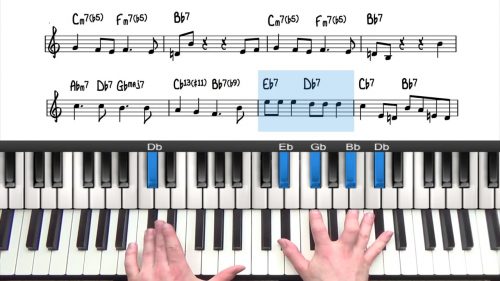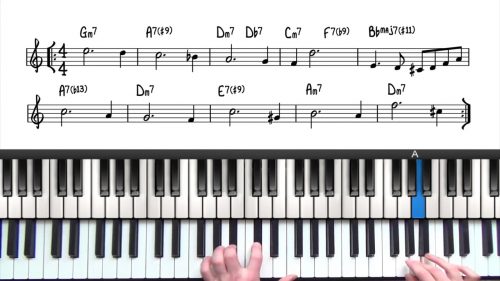How To Feel 2/4 Time
In this lesson Jovino breaks down and demonstrates how to feel 2/4 time. “Common Time” is what we call 4/4 which a lot of music is written in.
However, Brazilian music is often played in 2/4 – also known as “Cut Time”. Brazilian music grooves better when it is written in 2/4 as apposed to 4/4 time.
The Girl From Ipanema
Using the well-known jazz standard, Jovino demonstrates the difference in groove when you are feeling the time as 2/4 instead of 4/4.
The song moves, or ‘steps’ at a 2/4 beat, and which helps to establish the groove of the music and makes it easy for the syncopation to develop.
Gentle “Sideways” Motion
Samba originated from circle dances and so the music carries a side-to-side motion where everyone was stood around in a circle, gently rocking from side to side.
One of the key elements of 2/4 time is to feel this sideways motion.
Practice Tips
-
It is helpful to tap the 2/4 beat with your foot to connect to the groove of songs written in cut time.
-
Think of the 2/4 beat as a sideways motion.
-
Lots of Brazilian music originates in circle dances, and so this "side-to-side" became an essential component of the groove.







Glad that Jovino did this lesson: however I’m not really any further forward in understanding this. I would have found a more detailed walk-through more helpful – for example, actually demonstrating how the 2 beats fill the bar and perhaps more practice exercises to try until I get the hang of this. As it stands I now feel I need to look elsewhere for a more in-depth lesson.
Thanks for letting us know James. I agree that a more visual representation in this lesson would have been useful.
I personally found Chapter 2 of the following lesson very helpful for my own understanding of 2/4 feel – pianogroove.com/bossa-nova-lessons/basslines-rhythm-grooves/ – where Jovino describes the 2nd beat as a “giant rubber wall” which “bounces you back to the 1”. I’m sure you have already seen that lesson but may be nice to watch that chapter again.
I found that the visualising the “giant rubber wall” on beat 2, helped me to perceive the “side-to-side motion” that Jovino talks about in this lesson.
I also agree that practice exercises would be useful. From my own lessons, I know that ‘feel’ is always a difficult area to teach, particularly in comparison to harmonic studies or standards which are far simpler to communicate and teach in our visual lesson format.
You will have seen the practice exercises on my beginner courses, I will work on something similar with Jovino so that the Brazilian courses have dedicated practice exercises that cover the feel of this music.
Thanks!
Hayden
Thanks Hayden – yes, I think the most useful thing will be to revisit the prior lessons.